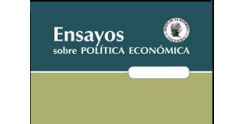Number:
86
Published:
Classification JEL:
D72, E62, H72

The most recent
Oscar Botero-Ramírez, Andrés Murcia, Hernando Vargas-Herrera
Juliana Jaramillo-Echeverri, Adriana Sofía Rodríguez
Gaurav Khanna, Carlos Alberto Medina-Durango, Anant Nyshadham, Daniel Ramos-Menchelli, Jorge Andrés Tamayo-Castaño, Audrey Tiew
Abstract
Using the pooled-mean group method (PMG), this paper attempts to trace the political transfer cycles in parliamentary and assembly elections in India from 1980-81 to 2010- 11. It is found that the political transfer cycles are more pronounced in the year before parliamentary elections and in the year of assembly elections in the case of loans from the centre. Furthermore, from the binary Logit specification it is established that opportunistic manipulations of grants from the centre, in the year before parliamentary elections and the levels of loans from the centre in the year of assembly elections can help the incumbent regain its power. Inflation is found to be electorally harmful for the incumbent as it increases the likelihood of losing the election at union level, but not necessarily at state level. Similarly, a right-wing government is more likely to win the election, whereas, if the centre and the states have the same government or if the state government is an ally, the possibility of retaining power for the union government is lowered, and it is raised in the case of state-level governments. Furthermore, a coalition government, in general, reduces the possibility of winning in both parliamentary and state elections.

 Manjhi Ganesh
Manjhi Ganesh